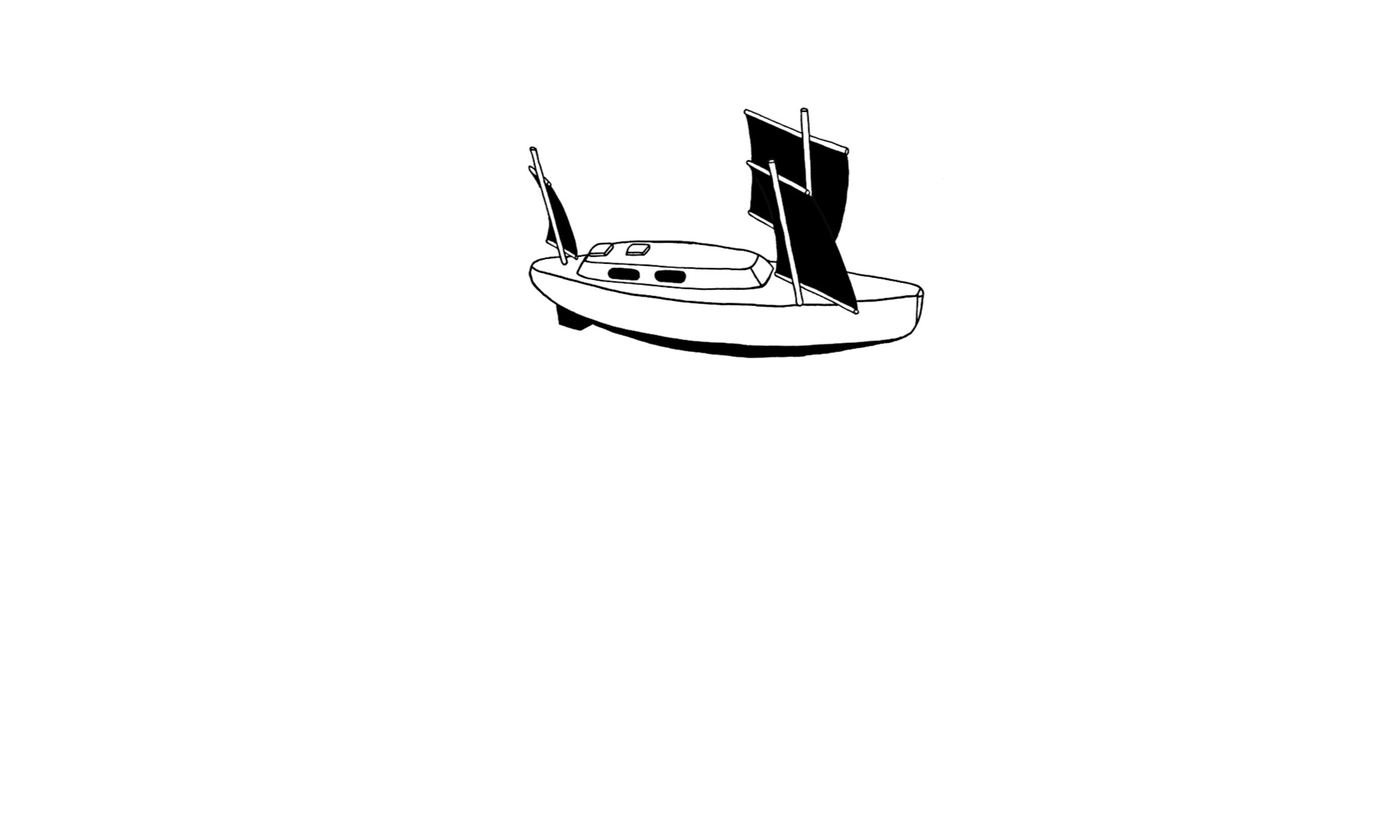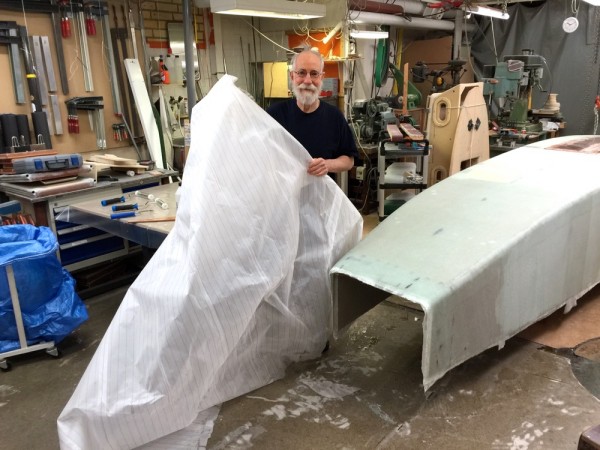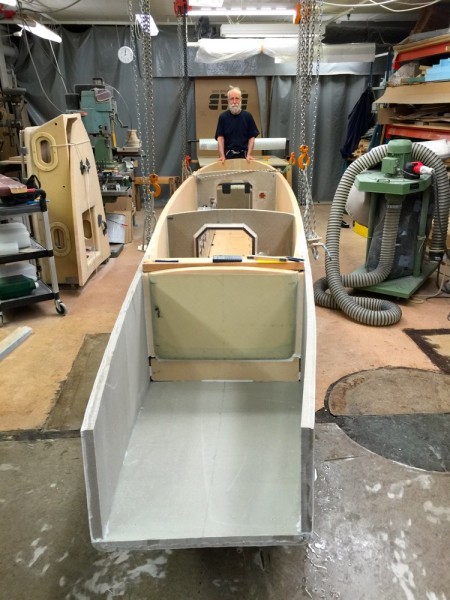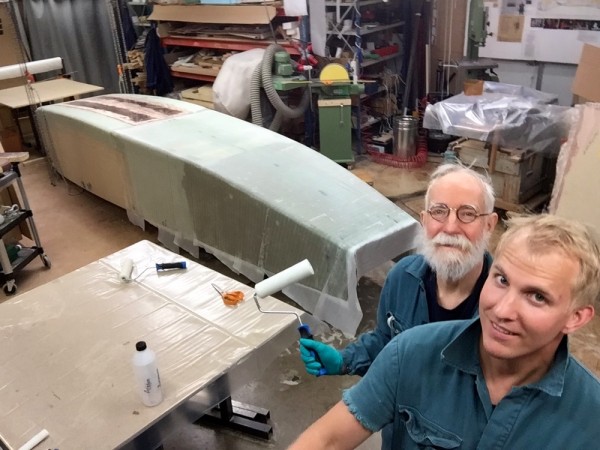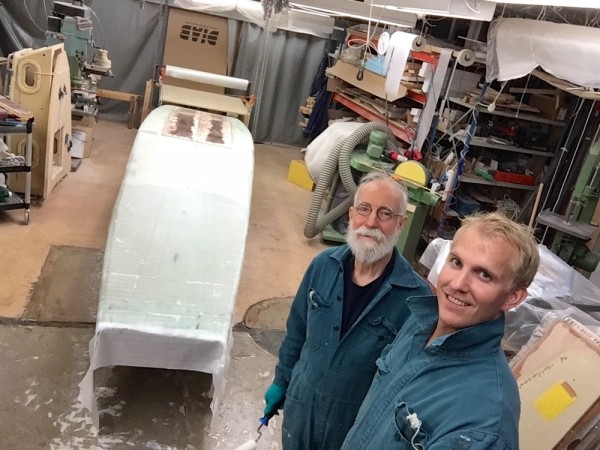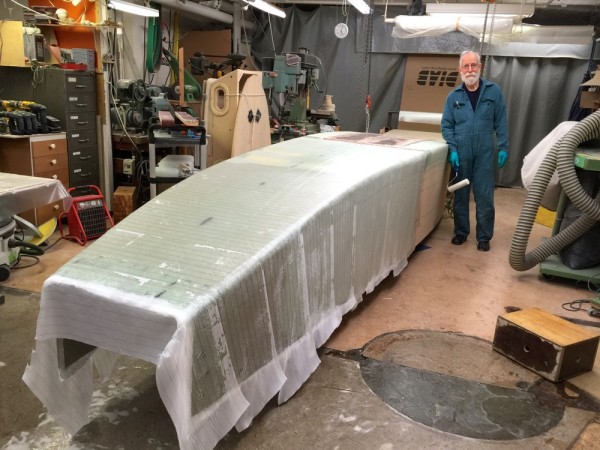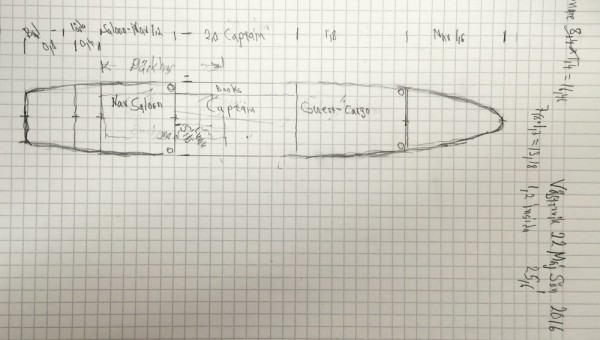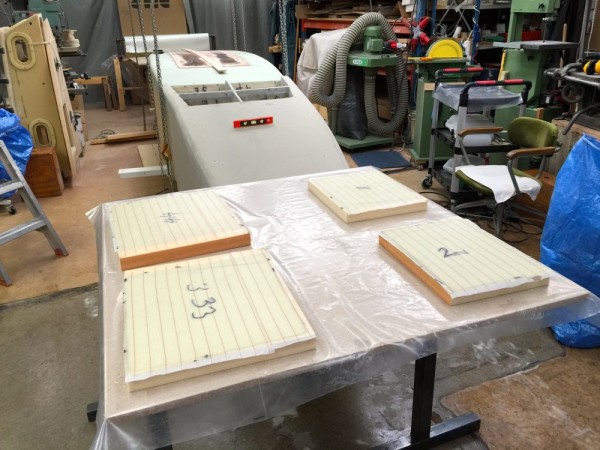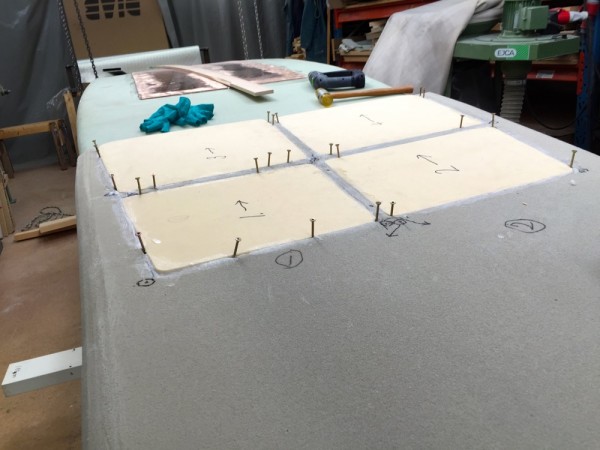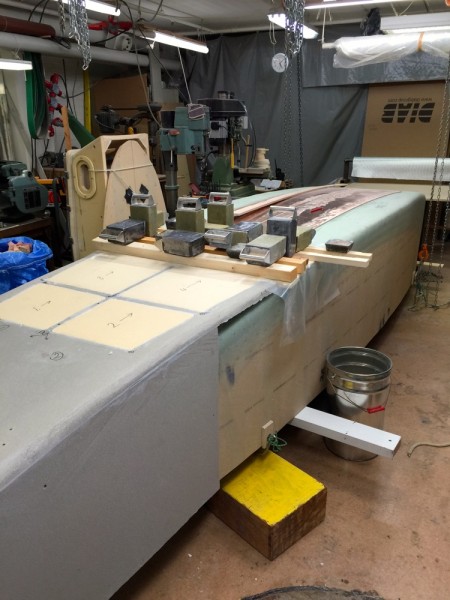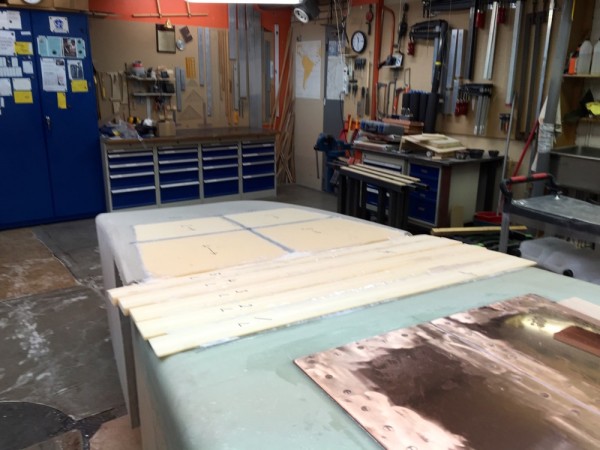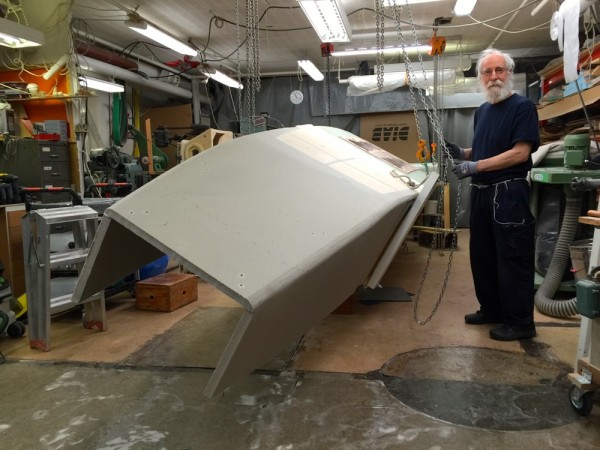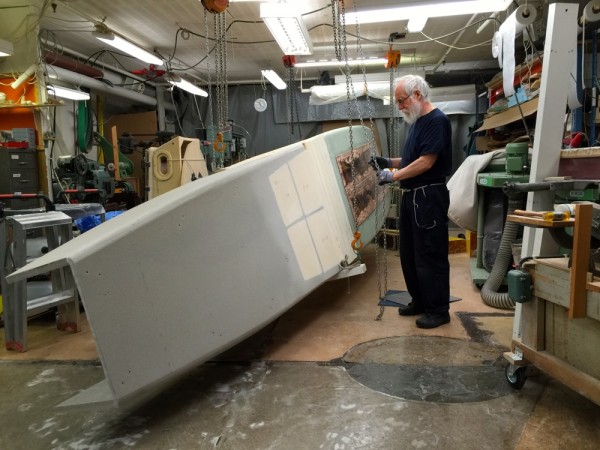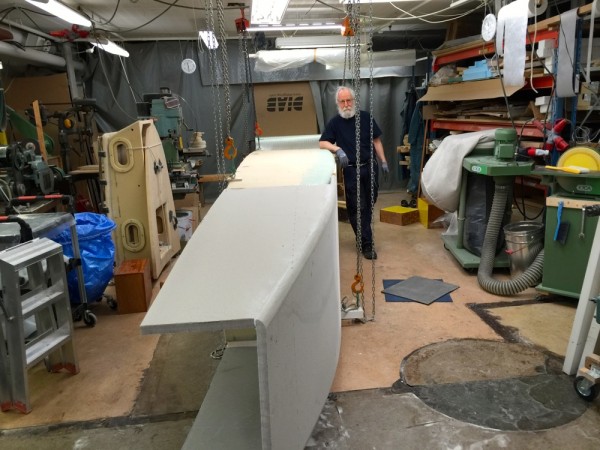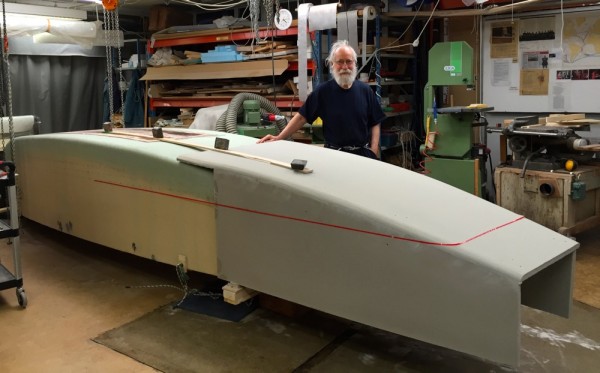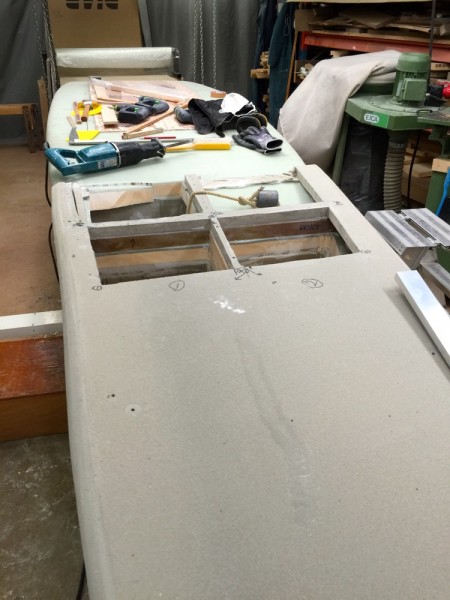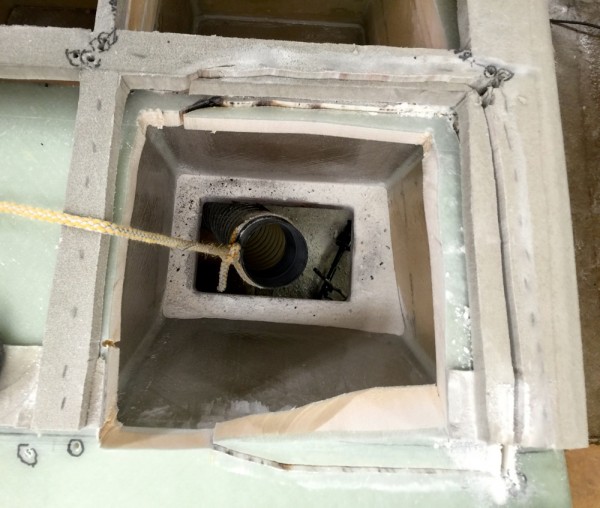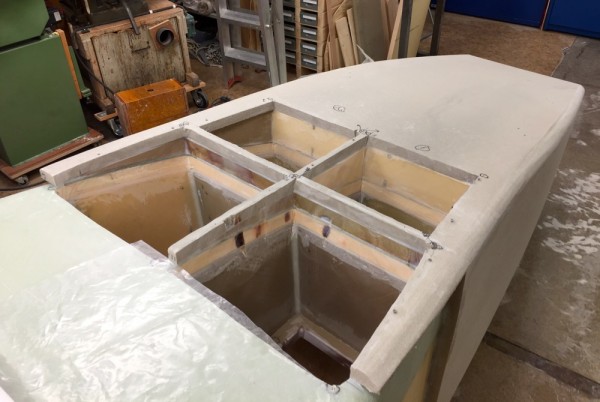Cecilia was a nice beutifull smart girl I met in Brazil 1979 when I was there in Alu-Bris on my way to Cape Horn. She was only seven years old then, but now we have found each other again. She has made five little films for me. This is the first one. Se more films from Kvarteret Filmproduktion.
EXTENSION LAMINATED PART 2
Today I removed the pealplay and turned the boat over to evaluate the new set of possibilities and do some work on the inside. Meauring the boat she turned out be 5.76 meters, 18 feet and 11 inches, pretty close to 19 feet a bit longer than expected. I am pleased.
Foto 1 me with the ripped of peelply.
Photo 2, Me at the end of Ex Lex.
The extension will contain a box for more food, swim fins, snorkel and diving mask and such things. Behind the box a swim plat form that includes ground gear. Mock ups will determine it.
Also there will be a boarding ladder which foulded up and extended behind the boat will support the yuloh. Raised even more it will be an safe and comfortable place to excrete from.
Ex Lex will have twin rudders.
To be continued…
Regards Yrvind.
EXTENSION LAMINATED
Today Petter helped me to laminate the extension.
It went well.
Below are 3 photos.
Petter and me.
One more from an other angle.
Me and Ex Lex.
The boat is getting closer and closer to my “Boat Ideal” which is today 7.8 meter long by 1.3 meter beam. Ex Lex is 5.65 long by 1 meter beam.
Yacht design is an iterant process “Boat Ideal” will have the same square section. I wonder if she will go to windward without leebord or other lewaypreventing devices.
Might not the flat sides function a bit like a chinerunner now that she has a lenght/beam ration of six?
When healed over say 20 degrees she presents a lot of flat surface to lee, several square meters, many times more than other boats keels or centerboards. After all a hulls weatherliness is the ratio of her resistance to lee compared to her resistance forward. A long slender hull with flat sides has much to speak for her although a fin keel is more efficient per unit of surface the slender hull more surfaces and uses them in other ways to, like to get a very low displacement lenght ratio, say below 150 and for a given displacement a longe waterline lenght.
She will most probably not be as weatherly as a finkeelboat, but well satisfay my desires as well as give a uncomplicated shallow draft cruiser.
Also for my use, in the narrow boat I can make a much better layout.
Klick once or twice to enlarge.
I think Ex Lex will give me a good indication of how “Boat Ideal” will work.
To be continued…
Regards Yrvind.
STILL MORE WORK
Here are some more pictures of stretching the boat.
Making lids for the cut holes.
Fitting them into the holes.
Gluing on a smoth transition with Divinycell of diminishing thickness.
After a bit of gringding.
Turning the Ex Lex 90 degrees to do one of the sides. To avoid damaging the Divinycell glued on and to get the lifting point abouve the center of gravity I am using a beam. Picture 1.
Picture 2.
Picture 3.
There is plenty of space in the added section.
To be continued…
Regards Yrvind.
MORE WORK
When I stretched Ex Lex I got double planking and bottom for about 60 cm. The solution is to remove the extra inner bottom. Se pictures. Unfortunately I can only do that from the outside, but I will gain about 30 liters of stowage space and that will be worth it because those 30 liters of food might keep me alive for 2 or 3 weeks. In total I estimate that the stretching will add 250 or so liters of stowage.
As I said before Ex Lex started out as an experimental boat with two purposes, to teach me about the new rigging, leeboards and others things, also to give me a bit of fun I the summers.
Few plans survive first contact with reality. When I saw Yrvind Ten and Ex Lex next to each other I realized how ridiculous Yrvind Ten and the project was. I used my good recipro saw and a carbide tipped blade. The boat was well built, but after a busy weekend, two friends helped me to drive the pieces to the dump.
Ex Lex the new boat will have fewer problems crossing the Atlantic equator southbound due to her much longer waterline. Few if any small boats have done that crossing.
That passage is special because you meet the south east trades head on at the same time as the equatorial current carries you westwards with a speed of about one knot or 24 miles a day and than if you have not made enough southing before you hit the longitude of eastern Brazil you will be carried back up to the North Atlantic and will have to do as the square riggers of old days had to do, make a circuit of the North Atlantic before you can try again.
The southeast trade has a fetch of several thousands of miles and blows freshly. The waves you are heading into are impressive.
I have done that passage three times. Analyzing the forces acting on my boats I have come to the following finding.
I knew, and it is well known fact that a small floating artifact in big waves is subjected to a centrifugal force that is considerable. On top of the wave you are lifted, in the trough you are depressed. On top of the wave the centrifugal force is subtracted from gravity. There it’s like being on the moon, you weigh less. In the trough gravity and the centrifugal forces are added. There it’s like being on Jupiter, you weigh more.
A displacement boat can only travel as fast as its wave system and when that wave system is on top of the wave it weighs less, therefore it and the boat travels slower. The speed of a wave system depends on the forces acting on it. The speed is high if forces are high and slow if forces are small. On top of a wave where there are small forces. Therefore, there a displacement boat cannot travel as fast as on flat water or in the trough its being slowed down.
Another consequence of the boats little weight on top of a wave is that she is losing stability. She heals over, losing driving force and lateral resistance. People think this extra healing at the top of a wave is due to more wind. The fact is, its normal to lose more than half the stability due to the influence of the centrifugal force. Stability is a function of weight and weight is lost at the top of the wave.
Another complication is the surface current that on top of the wave is travelling with the wind against you. This means that three bad things oppose a small boat going to windward in big waves when trying to cross Atlantic equator from north to south.
The boats sail force is not big enough to overcome this momentarily increased resistance; therefore the boat has to borrow a lot of kinetic energy. That slows her down.
Now with Ex Lex much longer waterline I am more confident of making it across the equator. If I had tried sailing with the late Yrvind Ten my best chances would have been to hug the African coast, but there, there are pirates. Down in the Southern Ocean it’s a question of surviving storms and spending time and that is a different set of problems that I do not worry so much about.
Some pictures:
Above looking nice.
Holes are cut.
A lot of cutting, grinding and unpleasent work.
Starting the rebuild.
To be continued…
Regards Yrvind.
